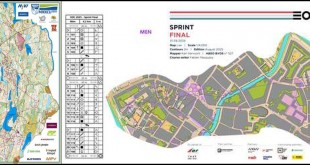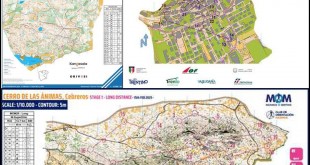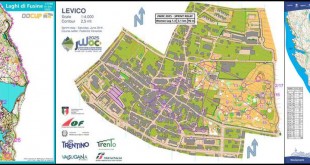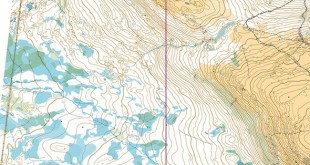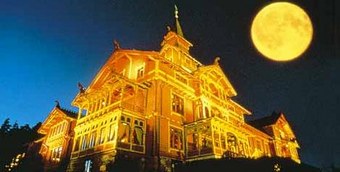 Micro. Macro. The media future of orienteering. Printing of orienteering maps with a laser printer. These were some of the issues covered at Holmenkollen this weekend. It was a big weekend for Norwegian Orienteering with 200 of the most influential people in the sport assembled in Holmenkollen Park Hotel for two days of seminars and discussions, and one evening of glory. The glory part – giving deserved honor to the best of Norwegian orienteering in many different fields – is covered elsewhere (and here and partly in english in the OKansas blog), and will not be touched upon here.
Micro. Macro. The media future of orienteering. Printing of orienteering maps with a laser printer. These were some of the issues covered at Holmenkollen this weekend. It was a big weekend for Norwegian Orienteering with 200 of the most influential people in the sport assembled in Holmenkollen Park Hotel for two days of seminars and discussions, and one evening of glory. The glory part – giving deserved honor to the best of Norwegian orienteering in many different fields – is covered elsewhere (and here and partly in english in the OKansas blog), and will not be touched upon here.
Present at Holmenkollen were most of the people working in the administration in the Norwegian Orienteering Federation, in the regions and in several clubs. Also many mapping people were present, and of course the National Team members and many others who would not let this chance to get to see what is happening within Norwegian Orienteering slip away.
Short summaries
There was a full program with parallel sessions during daytime, and for many it was difficult to choose which seminars to attend to. I suppose that most of the seminars and discussions will be summarized (in Norwegian) at the site of the Norwegian Orienteering Federation within a few days, but as I think much of this will have interest also for the international orienteering community, I will present some thought, comments and summaries of the things I attended here. I might get more into details on some things later this week, but for now just short summaries.
 Mapping seminar: ISSOM 2007 (Håvard Tveite) The new IOF norm for sprint orienteering maps, ISSOM 2007 (valid from January 1st 2007 – a list of changes and O-cad templates can be found) was presented by head of the Norwegian map commission Håvard Tveite. The changes were highlighted, and also differences between ISOM and ISSOM were discussed.
Mapping seminar: ISSOM 2007 (Håvard Tveite) The new IOF norm for sprint orienteering maps, ISSOM 2007 (valid from January 1st 2007 – a list of changes and O-cad templates can be found) was presented by head of the Norwegian map commission Håvard Tveite. The changes were highlighted, and also differences between ISOM and ISSOM were discussed.
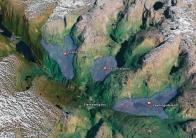 Mapping seminar: Presentation of the Norwegian Map register (Håvard Tveite/Jan Kocbach) The Norwegian o-map register was presented (see my part of the presentation – in Norwegian – here – 5 Mb file), and details were given on status (currently 1150 maps inside, including outlines), implementation, possibilities for use and future plans. It was also demonstrated how to add maps to the register, and everybody present were urged to work hard on adding maps before January 1st 2007 when we loose the right to use the accurate map data used for adding the map positions.
Mapping seminar: Presentation of the Norwegian Map register (Håvard Tveite/Jan Kocbach) The Norwegian o-map register was presented (see my part of the presentation – in Norwegian – here – 5 Mb file), and details were given on status (currently 1150 maps inside, including outlines), implementation, possibilities for use and future plans. It was also demonstrated how to add maps to the register, and everybody present were urged to work hard on adding maps before January 1st 2007 when we loose the right to use the accurate map data used for adding the map positions.
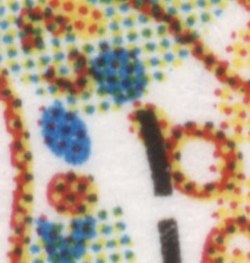 Mapping seminar: Alternatives to offset printing (Håvard Tveite) The main part of this presentation was background information to understand why there are accuracy issues with prints from color lasers, and details on the alternatives to the traditional offset printing. In addition, experiences with different types of laser printers were exchanged. This seminar is very important now, due to the fact that more and more clubs have started using laser prints (with varying quality) instead of offset printed maps. There is often too little knowledge about which laser printer to choose to buy (comparison of printers here and here, please send information about your printer as well!), and how to use OCAD optimally to get good results [see here (english version not yet available) and here in english at the bottom of the page].
Mapping seminar: Alternatives to offset printing (Håvard Tveite) The main part of this presentation was background information to understand why there are accuracy issues with prints from color lasers, and details on the alternatives to the traditional offset printing. In addition, experiences with different types of laser printers were exchanged. This seminar is very important now, due to the fact that more and more clubs have started using laser prints (with varying quality) instead of offset printed maps. There is often too little knowledge about which laser printer to choose to buy (comparison of printers here and here, please send information about your printer as well!), and how to use OCAD optimally to get good results [see here (english version not yet available) and here in english at the bottom of the page].
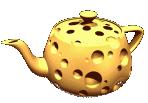 Organizing events: So easy that even mom can manage (Kirsti Aas Olsen and Jan Kocbach) The focus in this seminar was how to make the organization of events as easy as possible. The first part was about how non-orienteers/family members can easily do many jobs in organizing an orienteering event. The second part was examples on how to in a simple way handle competitions with 2-300 competitors with only 3-4 people organizing. See my part of the presentation – in Norwegian – here – which was based on examples from local competitions in Bergen. This last part is also covered in an article I have written for the upcoming issue of the Norwegian o-magazine Veivalg.
Organizing events: So easy that even mom can manage (Kirsti Aas Olsen and Jan Kocbach) The focus in this seminar was how to make the organization of events as easy as possible. The first part was about how non-orienteers/family members can easily do many jobs in organizing an orienteering event. The second part was examples on how to in a simple way handle competitions with 2-300 competitors with only 3-4 people organizing. See my part of the presentation – in Norwegian – here – which was based on examples from local competitions in Bergen. This last part is also covered in an article I have written for the upcoming issue of the Norwegian o-magazine Veivalg.
 Micro is also not difficult (Margrete Ruud Skjeseth) This presentation was on how a quite big micro competition was made for 13-16 years old. All parts of it were covered, from the planning of the course to details regarding time-taking and counting penalty rounds. It looked like great fun for the youngsters, although the number of organizers required was quite high. There was also quite an interesting part at the end of the presentation with some discussion around the micro concept with one of the men behind micro – Jan Vidar Nielsen. This included the concept of macro, which is furher covered below.
Micro is also not difficult (Margrete Ruud Skjeseth) This presentation was on how a quite big micro competition was made for 13-16 years old. All parts of it were covered, from the planning of the course to details regarding time-taking and counting penalty rounds. It looked like great fun for the youngsters, although the number of organizers required was quite high. There was also quite an interesting part at the end of the presentation with some discussion around the micro concept with one of the men behind micro – Jan Vidar Nielsen. This included the concept of macro, which is furher covered below.
- The media future of orienteering I – Micro Unfortunately I only managed to participate at the very last part of this presentation, but there seemed to be a lot of discussion and examples regarding the micro concept. Also tips about how to do the orienteering and how to think simplification on a micro course (most of the Norwegian national team was present, picking up details), and statistics and results analysis from various micro competitions. I have asked to be sent this presentation on an email – so maybe I can share more with you about this later on.
- The media future of orienteering II – Macro I missed this as well, but it seems like a new concept – macro – was introduced. Macro is very similar to micro, except there is no map and scale change, and the micro controls are part of the normal orienteering course instead of being a separate loop as in micro. We got a very nice 22-page color leaflet about traininig possibilities and possible competition forms for micro and the newly introduced macro – it should soon be available for download for everybody it was said. I hope to get more information about this as well.
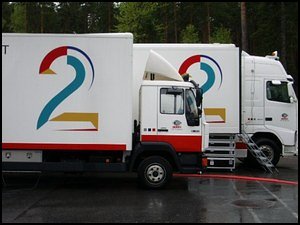 The media future of orienteering III – Television (Jens C. Knudsen) This was the highlight of the weekend for me – extremely interesting stuff about how the top TV producers think – and this applied to orienteering! Jens
The media future of orienteering III – Television (Jens C. Knudsen) This was the highlight of the weekend for me – extremely interesting stuff about how the top TV producers think – and this applied to orienteering! Jens
C. Knudsen is, according to the invitation to the seminar “star producer in TV2 and responsible for 2-3 soccer productions nearly every weekend. He knows what is needed to keep the viewers”. Quite an introduction, but I think nobody went home disappointed. It is interesting to listen to how cynical the television world is – and to see how it is the money that sits at the bottom. They won’t put up orienteering to be kind to the orienteering world ; it is all about money and developing a concept which can become really popular. It seems like it is either being high up there, or nothing at all. I have written a long separate story on this seminar.- Web TV – the media future for Orienteering (Fritjof Sandstad) The angle on this presentation was quite the opposite of the previous presentation. Here the concept was to make a good 4 hour Web TV production – streamed live over the internet – from the unofficial Norwegian Championships in Orienteering 2006 for Youths (14-16 years old). For about 15.000 euro, all covered through sponsors, the organizers managed to get produced a 4 hour web TV production using 6 different cameras(!), and quite a professional-looking result. The production was watched by 7000 persons (not for the total 4 hours), and was a real success. Many details were covered in the presentation, all the way down to placement of TV cameras for optimal sponsor profilation and how to get an internet connection in the middle of nowhere (at least quite close to there). And of course, we got to see part of the video from the web-TV at the end.
 World of O News
World of O News

